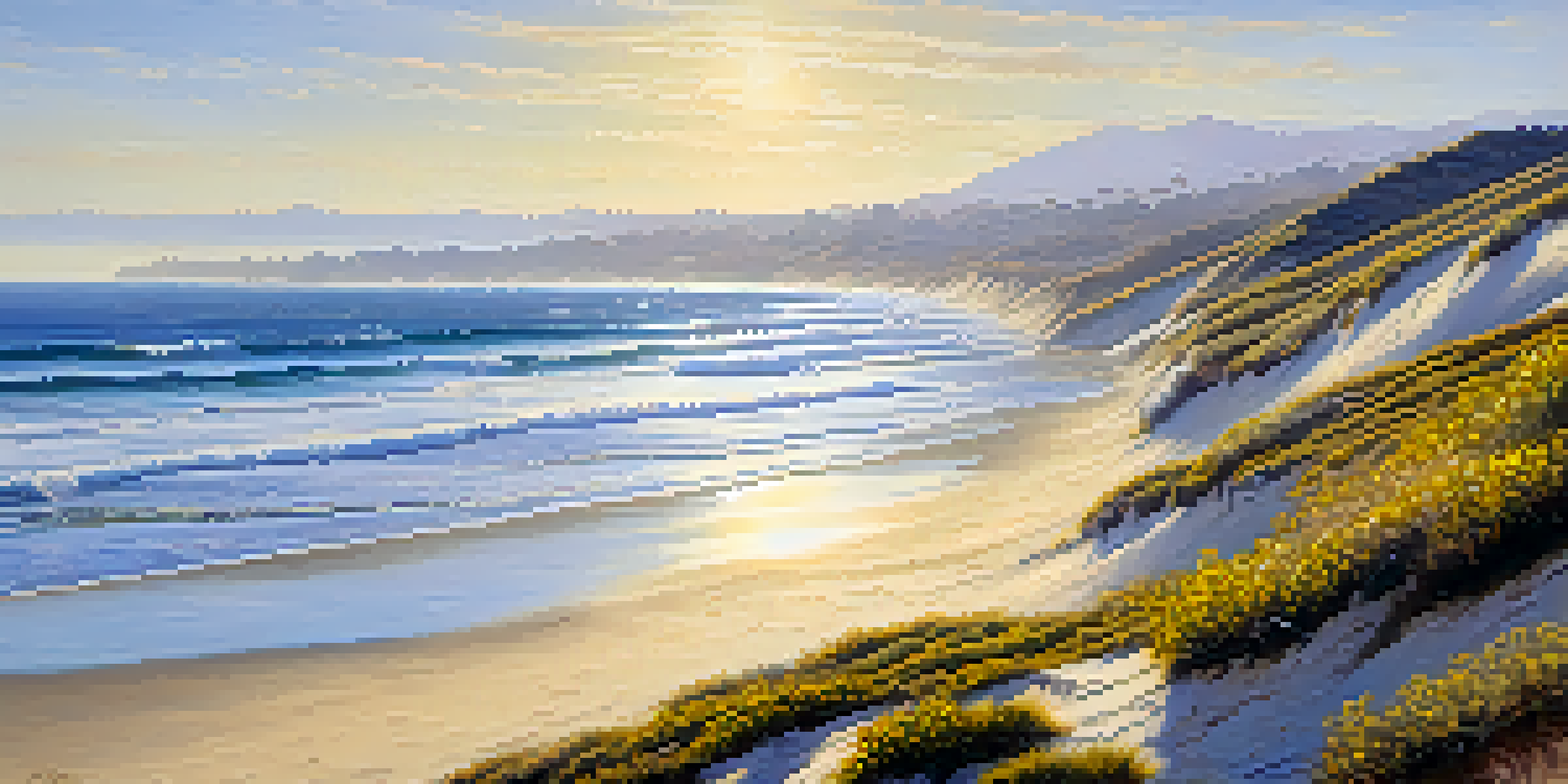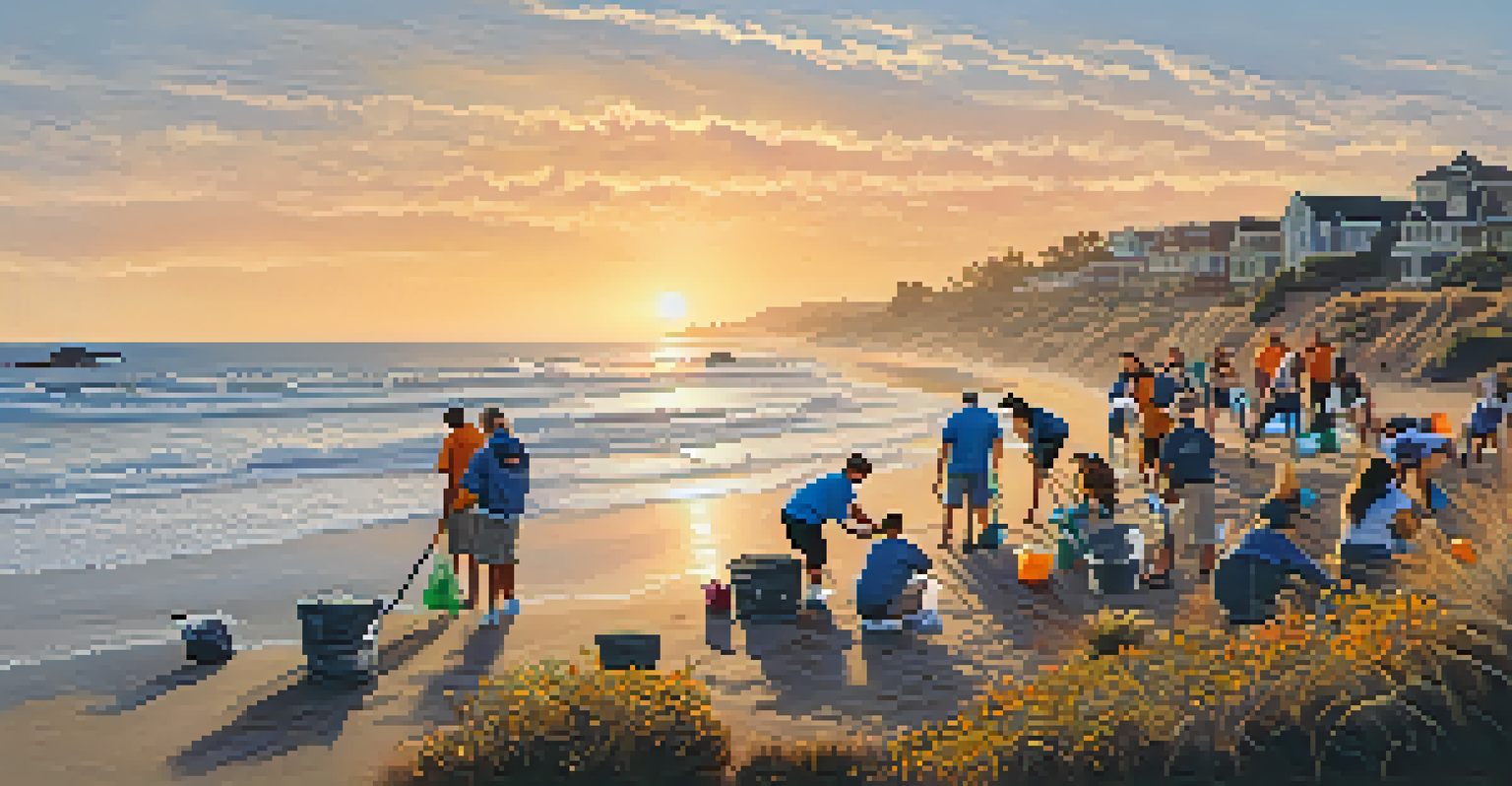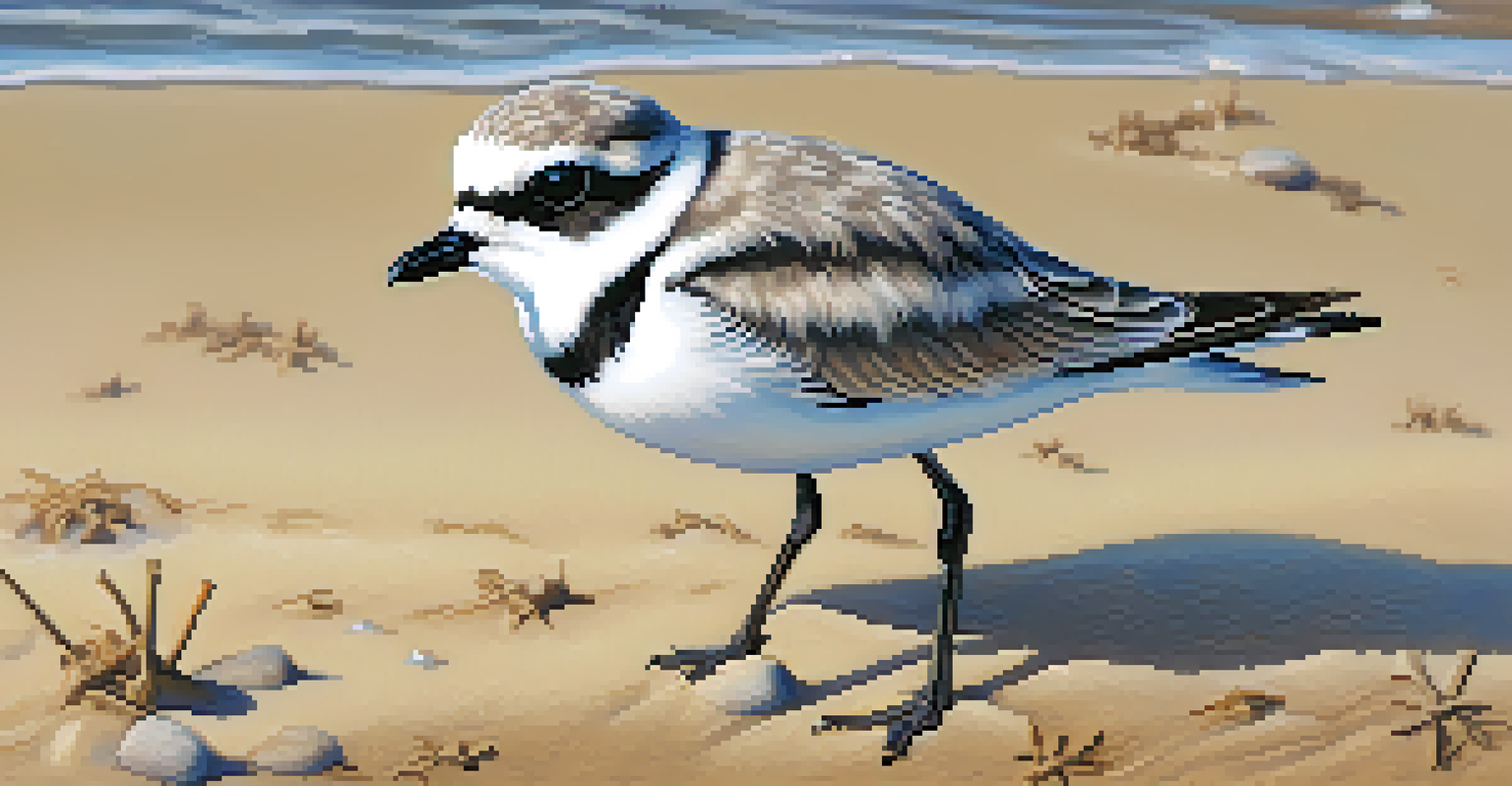Endangered Species of Carlsbad: A Coastal Conservation Focus

Introduction to Carlsbad's Coastal Ecosystem
Carlsbad, California, is renowned for its stunning coastal landscapes and rich biodiversity. Nestled between the Pacific Ocean and rolling hills, this area is home to a variety of ecosystems. Unfortunately, many species that inhabit these environments are endangered, facing threats from habitat loss and climate change. Understanding these challenges is crucial for effective conservation efforts.
We won't have a society if we destroy the environment.
The coastal region of Carlsbad is not just a beautiful destination; it's also a critical habitat for numerous plants and animals. The delicate balance of life here supports everything from shorebirds to marine life. As human activities expand, these ecosystems are increasingly at risk, making it essential to focus on their preservation.
By recognizing the importance of Carlsbad's coastal ecosystem, we can better appreciate the endangered species that rely on it. This awareness paves the way for community involvement and encourages proactive measures to protect these vulnerable populations.
Key Endangered Species in Carlsbad
Among the most notable endangered species in Carlsbad is the California least tern, a small seabird that nests on sandy beaches. With its striking white plumage and black cap, this bird is a symbol of coastal conservation efforts. Unfortunately, habitat destruction and human interference have led to a significant decline in their population.

Another critical species is the Western snowy plover, a small shorebird that shares similar nesting habitats. These birds have faced challenges from beachgoers and predators, making their survival increasingly precarious. Protecting their nesting areas is essential for the recovery of this species.
Carlsbad's Ecosystems are Endangered
Many species in Carlsbad face threats from habitat loss and climate change, making conservation efforts vital.
Additionally, the coastal sage scrub habitat supports various endangered plants and wildlife. The presence of unique flora, like the Encinitas baccharis, highlights the interconnectedness of species in this ecosystem. Each plant and animal plays a role in maintaining the health of Carlsbad's coastal environment.
Threats Facing Endangered Species
The primary threat to Carlsbad's endangered species is habitat loss caused by urban development and coastal erosion. As more homes and businesses are built, natural habitats are destroyed, leaving wildlife with fewer places to thrive. This encroachment disrupts the delicate balance of the ecosystem, putting numerous species at risk.
The environment is where we all meet; where we all have a mutual interest; it is the only thing we all share.
Climate change also poses a significant threat, resulting in rising sea levels and changing weather patterns. These shifts can alter habitats and affect food sources for many species. For instance, increased temperatures can impact the breeding cycles of local wildlife, leading to population declines.
Pollution, particularly from runoff, is another challenge facing these vulnerable species. Contaminants can seep into the ocean, harming marine life and altering the delicate ecosystems in Carlsbad. Addressing these threats requires a concerted effort from the community and local authorities.
Conservation Efforts in Carlsbad
In response to the threats facing endangered species, various conservation initiatives have been launched in Carlsbad. Local organizations and government agencies are working together to protect critical habitats and promote awareness. These efforts include habitat restoration projects that aim to rehabilitate degraded areas.
Community involvement plays a crucial role in these conservation efforts. Volunteers participate in beach clean-ups and habitat restoration days, fostering a sense of stewardship for the environment. Educational programs also help residents understand the importance of protecting local wildlife and their habitats.
Community Involvement is Key
Local residents play a crucial role in conservation through awareness and participation in restoration activities.
Moreover, regulations have been put in place to safeguard nesting areas for endangered birds. By establishing protected zones and implementing guidelines for beachgoers, these measures aim to reduce human impact on vulnerable species. Such collaborative efforts demonstrate the power of community in driving positive change.
Role of Local Communities in Conservation
Local communities are vital in the fight to protect endangered species in Carlsbad. Engaging residents in conservation efforts not only raises awareness but also fosters a sense of responsibility towards the environment. This connection can inspire individuals to take action, from reducing waste to supporting local conservation groups.
Neighborhood initiatives, such as tree planting and native landscaping, can significantly enhance habitats for local wildlife. When communities come together to restore natural areas, they create a healthier environment for both people and animals. These grassroots efforts are essential in building a sustainable future for Carlsbad's ecosystems.
Furthermore, local schools can play a pivotal role by incorporating environmental education into their curriculums. Teaching children about the importance of biodiversity and conservation can instill a lifelong appreciation for nature. These young stewards may become the future leaders in the quest to protect endangered species.
Successful Case Studies in Carlsbad
Several successful case studies highlight the effectiveness of conservation efforts in Carlsbad. One notable example is the recovery of the California least tern, which has seen population increases due to dedicated nesting site protections. Through collaborative efforts between wildlife agencies and volunteers, this species is slowly bouncing back.
Another success story involves the Western snowy plover, where specific conservation measures have led to improved nesting success rates. By creating protected areas and minimizing disturbances during breeding season, these birds have a better chance of survival. This progress showcases how targeted actions can make a real difference.
Successful Conservation Initiatives
Case studies show that targeted conservation measures have led to population increases for endangered species like the California least tern.
These examples of success not only inspire hope but also demonstrate the importance of continued investment in conservation. They remind us that with community support and effective strategies, we can protect endangered species and promote biodiversity in Carlsbad.
How You Can Help Endangered Species
Everyone can play a part in protecting endangered species in Carlsbad, even through small actions. Simple steps like participating in local clean-ups or reporting wildlife sightings can contribute to conservation efforts. Engaging with local organizations can also provide opportunities to volunteer and make a tangible impact.
Educating yourself and others about local endangered species is another valuable way to help. Share your knowledge with friends and family, and encourage them to get involved in conservation activities. The more people understand the importance of protecting these species, the greater the collective effort will be.

Finally, supporting policies and initiatives that prioritize wildlife conservation can create lasting change. Whether through advocacy or simply staying informed, every action counts in the mission to protect Carlsbad's endangered species. Together, we can ensure that future generations enjoy the beauty of our coastal ecosystems.